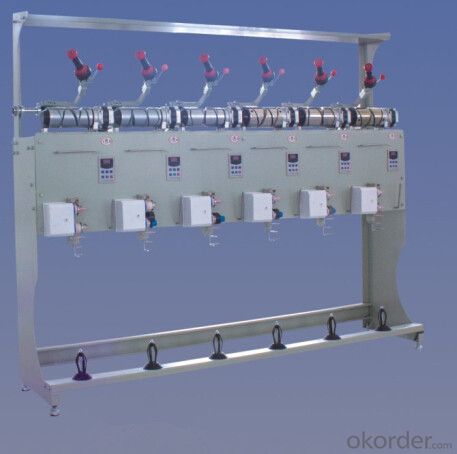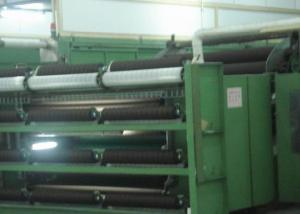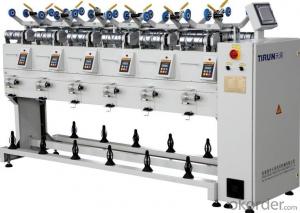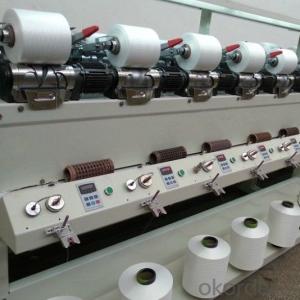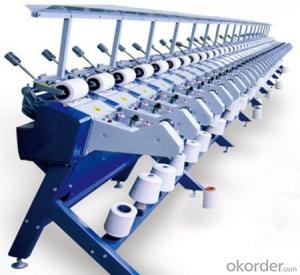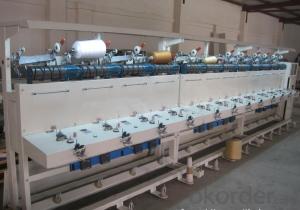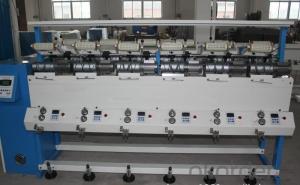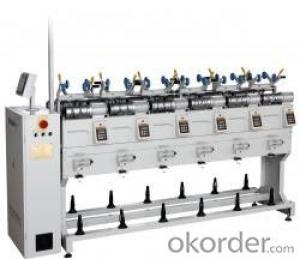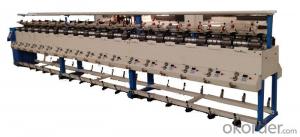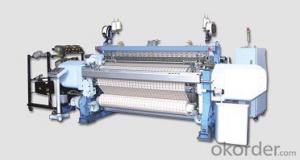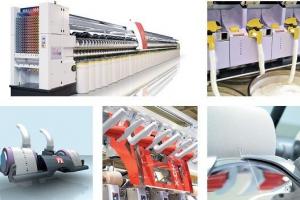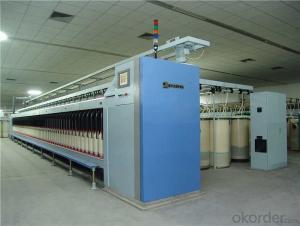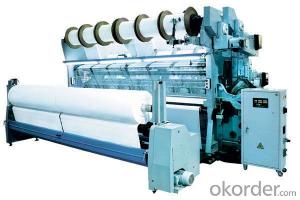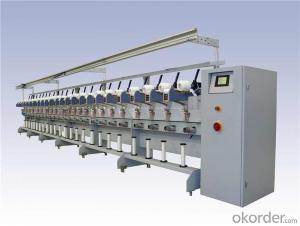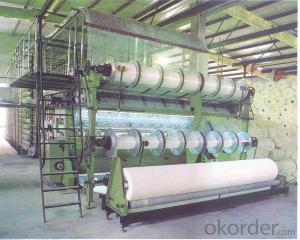Semi-automatic Textile Rewinder for Rewinding Yarn
- Loading Port:
- Shanghai
- Payment Terms:
- TT OR LC
- Min Order Qty:
- 1 unit
- Supply Capability:
- 10 unit/month
OKorder Service Pledge
OKorder Financial Service
You Might Also Like
Specification
Application:
Semi-automatic Textile Rewinder for Rewinding Yarn is used to waxing the yarn in hosiery mill and woolen mill. It can used with computerized flat knitting machine and large diameter circular knitting machine.
Main features of Semi-automatic Textile Rewinder for Rewinding Yarn:
1. Vertical winder path with no inflection point, little friction and less hairiness. It is appropriate for high speed waxing winding. The speed of waxing is twice as much as that of traditional table-type at least.
2. Using brushless DC moter with longer axis,it is converient to adjust the speed of single spindle.It can provide different winding speed for various yarns.
3. Double points waxing system with micro motors. The forming of cheese is better.
4. Using high quality alloy drums with optimized groove shape ,which has the advantages of good anti-overlapping characteristics, light weight, good wear resistance, and static elimination.
5. Single winding motor control for each spindle
6. High-speed creel with gas spring, which can keep constant winding pressure. This creel is stable and reliable.
Product Pinctures of Semi-automatic Textile Rewinder for Rewinding Yarn:
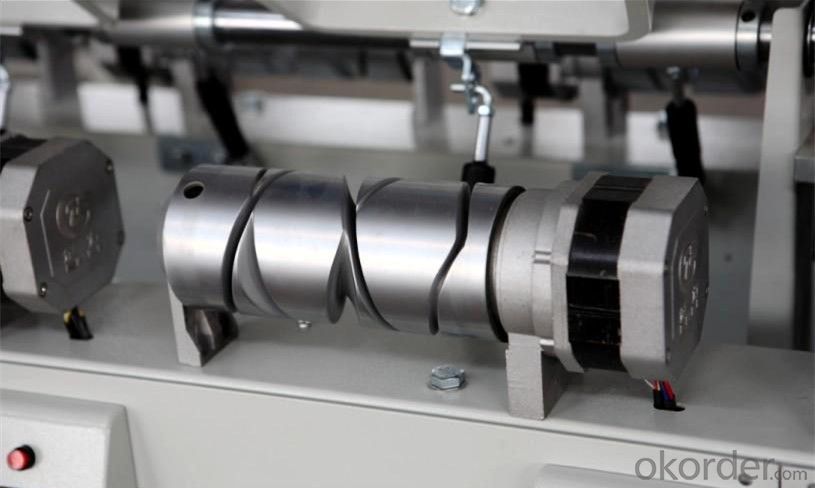

Package and Shipping:
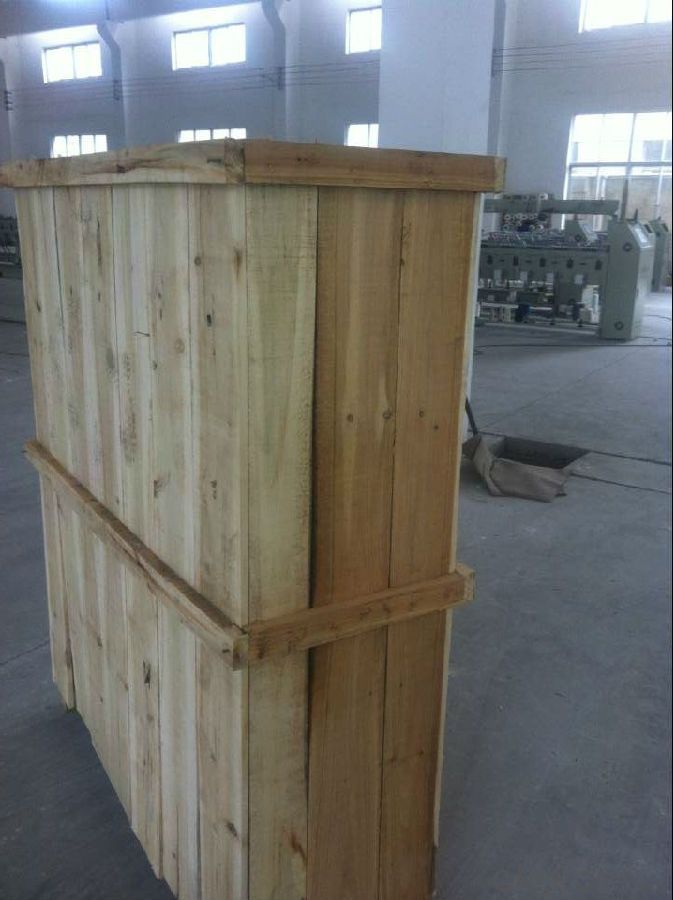
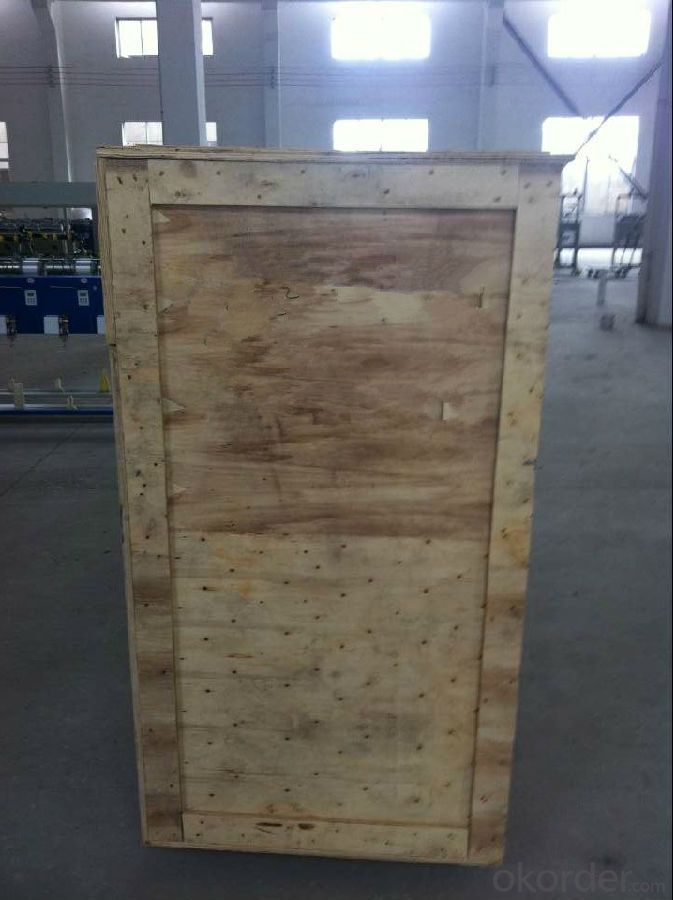
Specification:
| Items | Technical Parameters |
| Types of winding | Drum,Random |
| Mechanical speed | Up to 800m/min |
| Package shape | Cylindrical or conical |
| Traverse length | 230mm,280mm |
| Package bobbin | Cylindrical or conical of 3°30' |
| Package diameter | Up to φ 290 mm |
| Package density | 0.2-0.4g/cm3 |
| Yarns / count | Cotton.flax,wool, silk,chemical fiber /Ne 6…180 |
| NO.of spindles | 2,4,6 spindles per section for select |
FAQ of Semi-automatic Textile Rewinder for Rewinding Yarn:
· Q:What is the machine used for?
A:Semi-automatic Textile Rewinder for Rewinding Yarn is suitable for processing PP, PE split film yarn/ just twine, cotton twine, weaved twine to ball.
· Q: What is the MOQ?
A: 1 set.
· Q: What is the lead time of the product?
A: 5-20 days after payment
- Q: What is spinning down?
- The spinning is the earliest tool in the history of China for spinning, and the appearance of the scales is at least as early as the new Stone Age.
- Q: The state of the textile industry machinery revitalization, expanding domestic demand, the specific policy is what?
- The domestic basic industry is weak, the basic parts can not keep up, affecting the quality of textile machinery products and mechanical and electrical integration level. Textile machinery product development and the lack of organic cooperation, affecting the use of textile products effect. Policy does not match, affecting the competitiveness of domestic textile machinery products. In view of these problems, China's textile industry has adopted a series of measures to vigorously develop the basic equipment of textile machinery, the introduction of foreign textile machinery technology, differentiated development strategy, and the introduction of the corresponding policy of supporting the development of textile machinery, and achieved good results The
- Q: What is the difference between yarn spinning and ring spinning?
- Ring spinning (carding) process: Qinghua - carding - the first road and two - two parallel - roving - spinning - winding
- Q: How to promote the textile machinery industry transformation and upgrading?
- Combined with the electronics industry to the high automation, professional and strong industrial transformation, from the market-specific products
- Q: Textile equipment to protect the work is not a special type of work?
- Second, the former Ministry of Textile Industry "on the trial" textile industry chemical fiber toxic and hazardous operations early retirement range "notice [(88) spinning word No. 19) document, the viscose fiber 33 jobs (carbon disulfide manufacturing Workers, calcium sulphate liquid preparation workers, diggers, detergents, bleach, sulfonation, plate and frame filter workers, spinning workers, filament twist and drop silk workers, filament head workers, filament silk Workers, cellophane workers, iron chrome salt manufacturing workers, cotton linen preparation workers, bleach workers, carbon disulfide library workers, carbon disulfide safety workers, short fiber post-processing workers, carbon disulfide recycling workers, precision workers and spinneret finishing workers , Outside the precision workmanship, the strength of wire accessories replacement workers, waste silk cleaners, strong wire tube finishing workers, strong wire metering pump complete work, strong wire grading workers and loading and unloading silk workers, strong wire packer, strong wire early twist Block machine, strong silk weaving workers, strong silk with plastic workers, sulfonation machine and spinning machine to protect workers, acid station acid bath workers, acid station security workers) as toxic and hazardous special types of work and the four types of work (not Including mechanical operators Of the unloading of carpenters, log porter, turning carpentry, split woodworking) as a particularly heavy manual labor special work
- Q: What is the history of the development of textile machinery?
- China's Warring States period looms have been using the principle of leverage to pedal connecting the heald frame to complete the opening action. In 1733 the British J. Kai (also translated John Kay) invented the shuttle, hit the shuttle, so that high-speed flight, loom productivity can be doubled.
- Q: What is the cashmere dyeing process?
- The effect of dyeing on the quality and cost of woolen cashmere yarns The relationship between dyeing cost and dyeing cost is very small. When the fiber is dark, the fiber strength decreases and the spinning consumption increases. Heavy role
- Q: Is the textile machine made of those accessories?
- The mechanical part of the loom, including the opening, weft insertion, beating, winding, sent by the five major sports institutions, a lot of auxiliary parts, especially the modern loom, mechanical and electrical integration, a high degree of automation
- Q: Why did the first industrial revolution begin with the sign of Jenny's textile machine rather than shuttle?
- In the 1860s, the industrial revolution began with the British cotton industry, and then spread to mining, smelting, transportation and other industries in Europe
- Q: What is the historical background of the mechanization of the British cotton textile industry?
- Social environment: the completion of the bourgeois revolution, the British domestic social stability.
Send your message to us
Semi-automatic Textile Rewinder for Rewinding Yarn
- Loading Port:
- Shanghai
- Payment Terms:
- TT OR LC
- Min Order Qty:
- 1 unit
- Supply Capability:
- 10 unit/month
OKorder Service Pledge
OKorder Financial Service
Similar products
Hot products
Hot Searches
Related keywords



